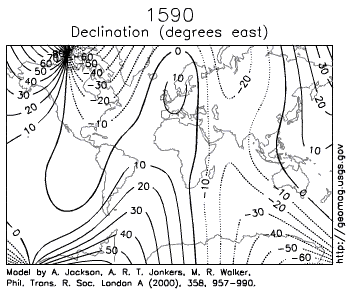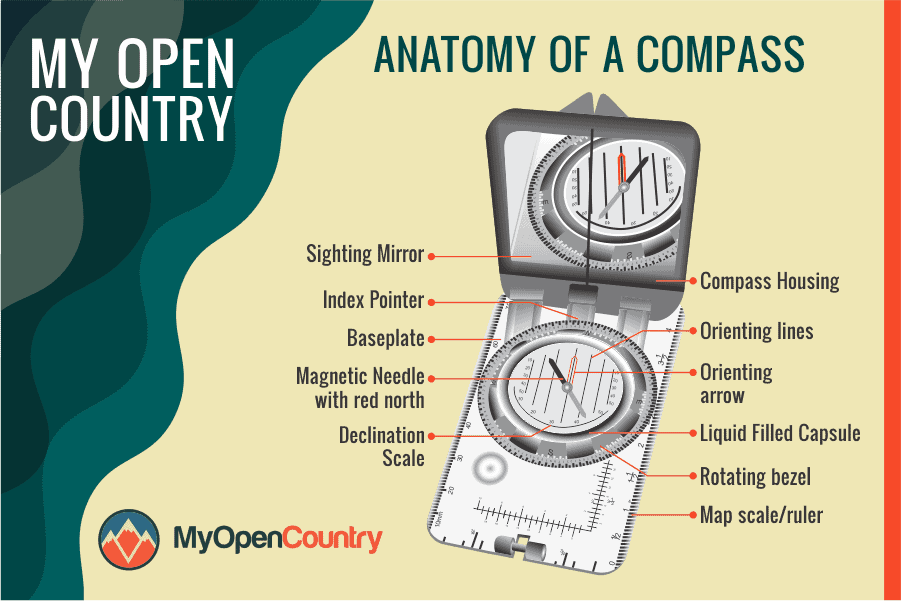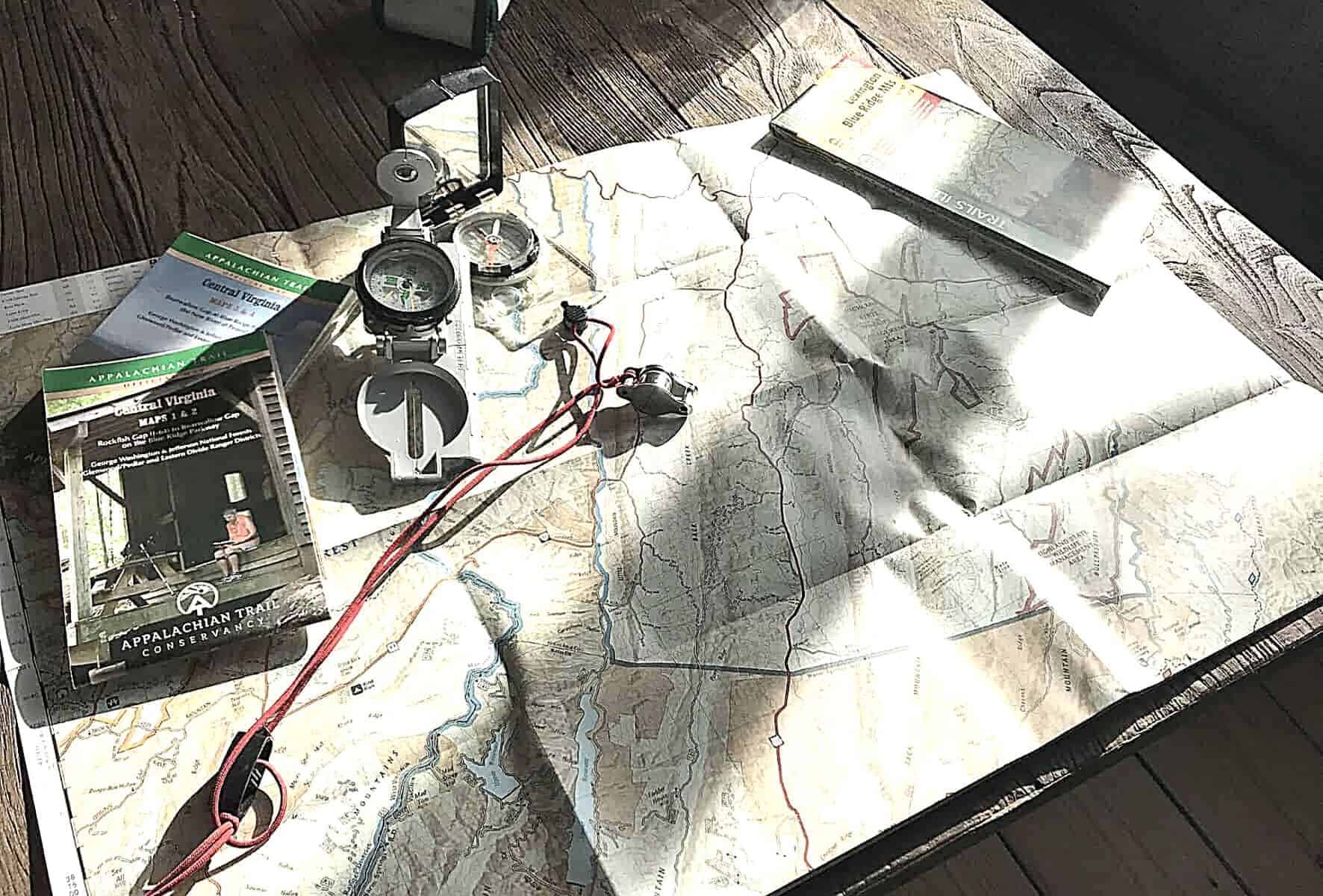On a practical level, hiking and backpacking can be defined by three simple questions: Where are you? Where are you going? How do you get there? Therefore, learning to navigate with a compass is the most fundamental skill to acquire if you want to spend time wandering the wilds.
To help you choose the right compass, we’ve reviewed our top 5 favorites on the market. Our overall top pick was the Silva Ranger 2.0, with the Suunto MC-2G Navigator, Suunto A-10, Brunton TruArc 3, and the Eyeskey Multifunctional Military Lensatic Tactical also highly recommended.
We cover the importance of bringing a compass and map when hiking and the key features to look for in a compass, including declination adjustment, global needle, sighting mirror, clinometer, luminosity, and durability.
We also discuss the anatomy of a magnetic compass, covering the base plate, rotating bezel, magnetized needle, orientating arrows & lines, and magnifying lens. Finally, we provide guidance on how to use a compass, as well as how to properly care for and store it.
Do
Don’t
Table of Contents
Why is It Important to Bring a Map and Compass?
Despite being originally published over 80 years ago, a map and compass are still listed as one of the mandatory components of the updated Ten Essentials. Even despite the large number of electronic devices with GPS these days.
Technology fails, batteries die and for this reason, even if you normally use a GPS device to navigate, you should always take a compass and map as a redundancy so you can always find your way.
As the saying goes “never trust your life to a battery”.
What is the best Compass for Hiking?
The following list includes our top recommendations for hiking compasses, with the Silva Ranger 2.0 leading the way.
- Silva Ranger 2.0
- Suunto MC-2G Navigator
- Suunto A-10
- Brunton TruArc 3
- Eyeskey Multifunctional Military Lensatic Tactical
- DryFlex Rubber grip for easy handling of the compass/great grip
- Built in adjuster for magnetic declination based on location
- Mirror sighting with sighting hole for determining direction over long distances
- Slope card for measuring slope and extra distance
- Magnifying lens for precision map work
Silva Ranger 2.0
Editor’s ChoiceOur top award for the best hiking compass goes to the Silva Ranger 2.0, earning high scores across the board.
Silva is known to produce some of the best mirror compasses on the market, and they don’t disappoint with the Ranger 2.0. Just flip up the mirror and align the sighting hole to accurately determine your bearing over long distances. This model comes with scales printed onto its lanyard to help accurately measure distances on your map.
Additionally, this compass features rubber grips to keep it slipping from your grasp, luminous markings on the base plate and a bezel that’ll help you navigate up to 4 hours after the sun sets and declination adjustment.
The one downside to the Ranger 2.0 is the occasional reports of bubble formation within the liquid capsule. However, unless it becomes severe this shouldn’t impact it’s accuracy greatly.
PROs
- Sighting mirror
- Adjustable Declination
- Scales on lanyard
- Very accurate
CONs
- Somewhat prone to bubbles
Bottom-Line: The best all-rounder, the Silva Ranger 2.0 is a high quality compass that will meet your hiking needs.
- Advanced Navigational Compass: Made with serious hikers in mind, this…
- Precise And Dependable: Operable in low light conditions, the MC-2 Compass…
- Stay On Course: Made in Finland, Suunto mechanical compasses help you safely and…
- Pioneering Exploration: Combining advanced engineering and thoughtful design…
- Authentic Heritage: Founded in 1936, Suunto brings over 80 years of high quality…
Best Orienteering Compass
The Suunto MC-2G Navigator, the most accurate model we tested, earns the title of the best compass for orienteering. It features a large mirror with a sighting hole, luminous bezel ring, and a global needle, making it suitable for use anywhere in the world.
The bezel is easy to grip and reads in 2-degree increments. As you would expect the baseplate has a magnifying glass and has a straight edge ruler with scale markings.
While we feel this is the most accurate compass on our list, in our opinion, it isn’t as durable as the Ranger 2.0. Some users have reported cracked covers, and the markings on the bezel wearing off with frequent use.
PROs
- Great accuracy + sighting notch in mirror
- Global needle
- Adjustable declination
- Luminous outer rim
CONs
- Numbers may rub off the bezel
- Cover is not the most durable
Bottom-Line: The most accurate model on our list, and would have taken the overall top spot if it was a bit more durable compared to the Ranger 2.0.
- Recreational Compass: Minimalistic and straightforward, the A-10 compass is the…
- Baseplate Compass: Ideal for navigating with a map and compass, the A 10 is…
- Stay On Course: Made in Finland, Suunto mechanical compasses help you safely and…
- Pioneering Exploration: Combining advanced engineering and thoughtful design…
- Authentic Heritage: Founded in 1936, Suunto brings over 80 years of high quality…
Suunto A-10
If you are looking for something as basic as it gets, the Suunto A-10 is a straightforward compass with a simple design. Its base plate features straight edges with standard rulers for map reading, and the rotating bezel is measured in 2-degree increments.
The biggest drawback of this model is the inability to adjust the declination, thereby requiring the user to mentally include this in every bearing they take. Additionally, the lack of a sighting mirror renders the accuracy a little diminished.
Finally, we have heard of many instances of the A-10 breaking from simple drops, so it isn’t the most durable model on our list.
PROs
- Straightforward design
- Cheap
- Easy to Use
CONs
- No sighting mirror
- Fixed declination
- Don’t drop it – prone to break
Bottom-Line: The Suunto A-10 is as basic and cheap as baseplate compasses get. Not one I would personally recommend with the possible exception as a cheap demonstration or backup unit.
- RELIABLE – Entry-level compass for your basic orienteering and mapping that can…
- ADVANCED NAVIGATION – Resists magnetic interference better than any competitor,…
- GLOBAL NEEDLE – With the TruArc Global Needle system that is accurate in both…
- MADE IN THE USA – Made in Brunton’s own facility in Riverton, Wyoming.
- EASY TO USE – Imperial and metric scales, tool-free declination makes the TruArc…
Brunton TruArc 3
Best Cheap CompassThe American company Brunton is well known in orienteering circles, and its TruArc 3 picks up our award for best budget-friendly compass.
A relatively inexpensive no-frills product, it still features a rotatable bezel with orientation arrow. Straight edge rulers, both with metric and standard scales, and a global needle. The most impressive feature, however, is it has a tool-less method for adjusting the declination.
The no-frills design does come at a cost though, and (understandably) as it is a cheaper model, the compass has no sighting mirror, nor luminous numbering.
PROs
- Tool-free declination adjustment
- Inexpensive
- Rotary Bezel
CONs
- No Sighting Mirror
- No Luminosity
Bottom-Line: If you are looking for a no-frills, inexpensive compass for hiking or hunting then the Brunton TruArc 3 may fill those needs.
- WATERPROOF AND SHOCKPROOF FOR ROUGH USE – The base and cover are constructed…
- EASY AND ACCURATE READINGS – The floating compass dial has a 360 degrees scale…
- TAKING BEARINGS EASILY – Build with an optical eyepiece for sighting bearings…
- ALLOW FOR CLEAR READING AT NIGHT – When exposed to enough light, the north arrow…
- MORE FEATURES – A conversion chart for angle, gradient, and distance appear on…
Eyeskey Multifunctional Military Lensatic Tactical
Best Lensatic CompassThe Eyeskey Multifunctional Military Lensatic Compass wins the award for the best lensatic compass due to its accuracy.
The Eyeskey is in one word. Durable. Make that two words. Durable and accurate. You can really feel the quality in the build, and it in the unlikely event that you do somehow break it, the manufacturer offers a full lifetime warranty.
The biggest downside with this model is that it is almost double the weight of the other models in our review, weighing in at over 8 oz. This is unlikely to bother most folks, but for the ultralighters out there, picking one of the previous entries will save you some weight.
PROs
- Sturdiest compass in the review
- Great Accuracy
- Lifetime Warranty
CONs
- Heavy
Bottom-Line: A highly accurate, and sturdy compass to help find your way – perfect for your bug out bag, or a good compass to take hunting.
How to Choose the Right Hiking Compass for You?
To assist in selecting the right compass for your needs, the following list breaks down the most common features and explains whom they will benefit the most.
- Declination Adjustment
- Global Needle
- Sighting Mirror
- Clinometer
- Luminosity
- Durability
Declination Adjustment
The difference between the magnetic north that your compass needle points to and the actual North (True North) is known as magnetic declination, which can vary considerably depending on your location on the earth’s surface. This declination arises from local variations in the earth’s magnetic field and needs to be considered to obtain precise accurate readings.
If you typically do your hiking/backpacking in the one region, you can normally adjust your compass to reflect the areas magnetic declination (found in the legend on good topographic maps) and forget about it.
However, if you do a lot of traveling, or you live in an area where the declination changes rapidly, then you’ll need to adjust your declination more frequently to account for the difference.
Wait. Magnetic declination changes over time as well as from area to area?
Everyone remember the science project where you had to build a model of the Earths interior layers? No? Well, I won’t revisit the agony of it in detail, but suffice to say the interior of the earth is comprised of multiple layers. The molten metallic region of the outer core is constantly moving fluids around. It’s this constantly moving distribution of fluid metals (some of which are magnetic) that causes variations to the earths magnetic field that we see at the surface.
With me?
Moving away from geology and back to navigation device – Not all compasses allow you to adjust for declination, and I would never ever recommend a compass that does not have this feature. Most compasses that I have used typically set the declination compensation by turning a small screw in the back of the baseplate with a declination adjustment key to create an offset between the orientation lines/arrow and the north arrow.
You could (in theory) do the declination adjustment every time you take a bearing by simply adding/subtracting from the measured bearing. However, in my opinion, this is really setting yourself up for a monumental error that one time you forget.
You can typically find a declination scale on most modern topographic maps, next to the map legend.

Global Needle
A compass with a global needle, also referred to as a global compass, can be used both north and south of the equator. If your compass lacks this feature then you’ll need a model designed for either the northern or southern hemisphere.
This is because if you tried to use a southern hemisphere compass in the northern hemisphere, say in the U.S. for example, you would see the needle dip substantially into the baseplate causing it to stick and for needle movement to be jerky.
However, a global needle would allow the compass needle to tilt more (up to 20 degrees) without sticking onto the baseplate. Thereby, allowing for smoother navigating no matter what hemisphere you are in.
Sighting Mirror
A mirror situated in the hinged lid of the compass assists in taking more accurate compass readings, known as a sighting compass. To use it, hold the compass at arm’s length, and tilt the mirror downward at an angle to simultaneously view the needle/orientation arrow (in the mirror) and the landmark you are sighting. This simple feature substantially improves your ability to obtain accurate bearings.
Clinometer
A clinometer, typically found on an advanced compass, measures the steepness of slope angles (or rock beds for geologists). Often, clinometers feature a small free-moving arrow inside the liquid capsule, positioned beneath the magnetized compass needle.
This feature is more geared for backcountry skiers and mountaineers to assist in assessing avalanche hazards. If you hike on well-maintained trails, then this is likely a feature you will be unlikely to use. Finally, for any and all geology students, this is a must-have feature for your fieldwork.
Luminosity
Some compass models have luminescent paint on the needle and bezel markings to aid with navigation in low-light conditions.
Durability
Given the rough terrain where your compass is likely to be used, durability is particularly crucial. While most compasses are made from plastic, ideally moving parts will be made from metal. Additionally, having a cover to protect the compass from damage is vital.
Durability is closely tied to cost, and it’s crucial to remember that your compass is your key navigation tool on every journey. Therefore, investing in a high-quality and reliable compass is essential and not an area where you should try to cut costs.
Thankfully something that I have never really had to worry about, nor should you if you stick to the more reputable manufacturers such as Suunto compasses, Silva or Brunton.
What Is The Anatomy of A Compass?
Navigating successfully (and safely) requires understanding the purpose of each component and how to use them correctly. These are outlined in the list below.
- Base Plate
- Rotating Bezel
- Magnetized Needle
- Orientating Arrows & Lines
- Magnifying Lens

Base Plate
The base plate is the flat transparent surface that supports the bezel and needle housing. It will have navigational markings etched onto it, as well as a ruler for measuring distances on a map. The straight ruler edge is useful for drawing straight lines when triangulating your coordinates.
Rotating Bezel
The rotating bezel, also known as the azimuth ring, is the movable ring forming the outer part of the compass housing. It is marked in degrees from 0° to 360° around its edge. You rotate the bezel to take bearings relative to magnetic north.
Magnetized Needle
The most recognizable part of a compass is the magnetized needle. This needle floats in a damping fluid and is attached to the baseplate with a jeweled bearing which it pivots upon.
The damping fluid is present to help steady the needle, making it more accurate than a needle sitting in air alone (especially if combined with shaky hands). This fluid won’t freeze, but you may over time see bubbles appear within the fluid – these won’t negatively affect the compasses accuracy (unless the capsule becomes more air than liquid).
The magnetized end of the needle (typically painted red) will pivot along the Earths magnetic field, resulting in the needle constantly rotating to point to magnetic north. NEVER leave your compass near strong magnets or items that have strong magnetic fields (such as car speakers) as this could demagnetize the needle, rendering its readings inaccurate.
Orientating Arrows & Lines
The orienting arrow and lines, also known as meridian lines, are situated in the compass housing and move with the bezel during rotation, aiding in basic navigation tasks.
Magnifying Lens
Not essential for navigation, but many compasses include a magnifying lens in the baseplate, which is useful for reading small or crowded map details.
How Do You Use a Compass?
A good place to start is by reading our article on how to use a compass and map, but most practical skills are best learned through experience. Start by practicing your navigational skills in an area you are familiar with until you become more confident. Additionally, there are orienteering classes available nationwide, such as those provided by R.E.I.
Every year, an estimated 1500 people get themselves lost in our National Parks. Tack on other wilderness areas and the number becomes even larger. Many of these incidents could have been easily avoided by knowing proper navigational skills. In fact, in innumerable cases, the “lost hikers” have been found in close proximity to trails and tracks that could have led them to safety if they had the equipment and the skills.
Don’t become a statistic. Learn how to navigate properly!
How Should you Store & Care For Your Compass?
As mentioned earlier, avoid storing your compass near magnetic or electrical fields, as they can demagnetize the needle, rendering it useless in the field. For this reason, it’s good practice to double-check that your compass is functioning correctly before you embark on any trip.
Similarly when you’re out on the trails, do not keep your compass together with your cell phone, as this can also demagnetize the needle. I find it’s best to keep your compass near the top of your pack, in a large ziplock bag with the topo maps.
Frequently Asked Questions about Compasses
Q: My compass has a bubble – will it still work?
The liquid inside the compass will expand and contract with temperature changes, so it should still function properly. You can find more details in our article on finding air bubbles in a compass.






